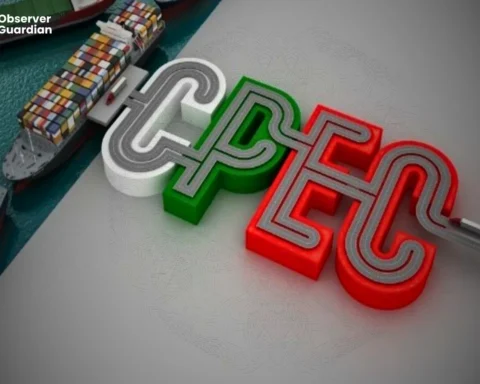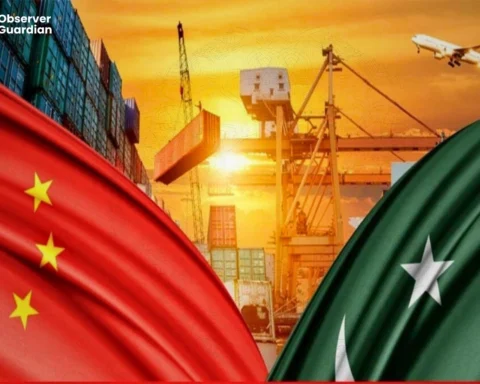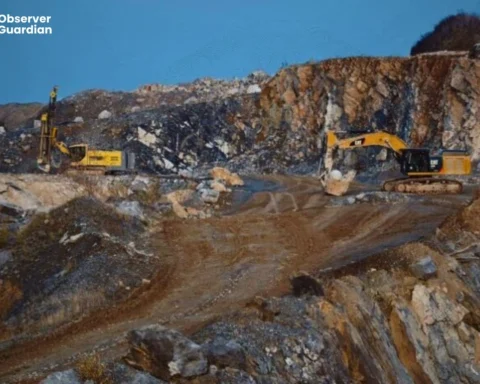Since the United States can no longer afford the luxury of patiently drawing the rest of Eurasia to its orbit of influence, but rather it must now recalculate its relationship with the region in the Eurasian fringe, Washington now faces a highly critical question strategically: what is going to happen to it in its quest to retain and hold onto its influence, economic presence, and access to resource rich and strategically rich territory in Central Asia and Afghanistan? This new reality presents Pakistan as neighbour to Afghanistan and not as a mere neighbour, but as a centre piece, strategic overland passage, safe, scalable and politically and economically feasible American trade and American humanitarian outreach.
The Khyber Pass Economic Corridor (KPEC), a joint Pakistan and World Bank project costing $482.75m is the centre of this shifting polarity. This development initiative will revolutionize the ease of connection all the way to Peshawar to Torkham and beyond to Central Asian Republics (CARs) through CAREC corridors 5 and 6. Opportunity is evident to US businesses, policymakers and strategists; Pakistan can provide the bridge through which America is reconnected to a region otherwise blocked by either unstable or hostile transportation options.
Why Pakistan Matters More Than Ever
The US has no easy way to reach them in CARs and Afghanistan. Land transportation over Iran is also politically impracticable, whereas routes through Russia are anyway still not diplomatically sound. This gives the geography of Pakistan as the most viable. Its land links the Arabian Sea and the center of Asia to the center of Asia via a complex of highways, rail connections and new trading routes.
Notably, the infrastructure push of Pakistan is not all lip service. The KPEC will cut transport costs and transit times and connect both Central Asia and the Pakistan seaports at Gwadar and Port Qasim. This places Pakistan as a truly connectivity partner, a position which integrates flexibility of economic value and geopolitical interest.
The Khyber Pass Economic Corridor
KPEC lies beyond being a highway, it is a trade artery that has the propensity to trigger job creation, investment by the private sector and cross border economic activity. It is estimated to create in excess of 100,000 jobs and will connect Afghanistan and Central Asia which is land-locked with the rest of the world.
In this case, it is the chance of upgrading in not only physical infrastructure but also digitizing trade easier through customs automation, electric border controls, modern warehousing, and logistics centres in the case of the United States. These projects may offer fertile ground to American technology companies that are deeply interested in supply chain optimization, e-governance as well as blockchain-based verification of trade.
Gwadar and Port Qasim as Alternatives
It is hard to overestimate the geopolitical opportunities of the Pakistani ports. Access points Port Qasim and Gwadar can divert the exports, imports, and humanitarian aid to and from the US to bypass congested and politically sensitive sea lanes. These ports are connected to road and rail networks which directly connect to the KPEC and other regional corridors which provide a safe passage of the good towards Afghanistan and the CARs. This access is essential from the point of view of humanitarian perspective. It makes sure that Afghanistan or disaster-stricken areas in Central Asia are not held at ransom to the goodwill of the transit states which may possess competing agendas.
Countering Adversarial Leverage
Stability in trading corridors in Pakistan is not only an economic affair. It diminishes the bargaining power of geopolitical competitors such as China and Russia that reigns over the central Asian connectivity and routes to resources. At the cost of stretching this monopoly the US can simply support corridor development in Pakistan, add some competitive levels of infrastructure and provide Central Asian states with a choice other than being dependent on either the Beijing Belt and Road Initiative (BRI) or the transport networks of Moscow. This can be easily explained by Washington having a larger agenda of a balance of power in Eurasia.
Untapped Potential in Resource Flows
Afghanistan and Balochistan possessing of mineral are untold. Copper, lithium, rare earths and other strategic minerals vital to the US tech and renewable energy industry can pass through Pakistan corridors to the world market. The difficulty however, is that the value has to be extracted, and this is done with secure, efficient and transparent logistic systems which the US firms can take a lead. Investment in mining related infrastructure including value added processing infrastructures in Pakistan, might see American investment being made in mining industries as a way of ensuring that provision of resources is not monopolized by other players. Such approach would not only broaden supply chains, but also integrate the US more into the regional economies.
Reviving CASA-1000 and TAPI
The other where Pakistan is the indispensable link is energy connectivity. One phase of such a route, CASA-1000 (Kyrgyzstan and Tajikistan to Pakistan) and TAPI (Turkmenistan Afghanistan Pakistan India) are still in limbo or under-exploited. Diplomatic and financial support by the US can be used to rejuvenate such projects which will give Central Asia an outlet to cash in its abundant energy and South Asia a means of satisfying its increasing energy needs. These projects would see Pakistan being at the centre of a trans-regional energy landscape where the US is an active and visible player.
Aligning with US Long-Term Goals
Instead of the open-ended military commitments, the American foreign policy focuses more and more on sustainable engagement. By making use of the geography of Pakistan as a means to enter both Afghanistan and Central Asia, this accomplishes exactly that. It aids the US business, reinforces regional stability and avoids the vacuum which competitors would occupy. By concentrating on trade, infrastructure and technological partnership, the US will be able to cede a legacy of development and not dependence, which is more sustainable and long-lasting even after political changeovers in either country.
The fact that Pakistan is becoming a land bridge between Afghanistan and the CARs is not a theoretical notion but it is being realized through schemes such as KPEC and being aided by its maritime gateways. This is a combination of economic potential, strategic access and geo-political balancing that is hard to match by other routes in the case of the US.
There is nothing charitable or simply strategic hedging in investing in the connectivity infrastructure of Pakistan, this is a win-win business concept. US has the capital, technology, market reach; Pakistan has the location, political will, and up and coming infrastructure. They can work together to open up a potential corridor of opportunity running the length of the Eurasian continent connecting the heart of Asia with the world.
Disclaimer: The views and opinions expressed in this article are exclusively those of the author and do not reflect the official stance, policies, or perspectives of the Platform.







